

Furniture
How Low Should You Hang A Chandelier
Modified: February 24, 2024
Shop our selection of furniture chandeliers and find the perfect height for your space. Explore our range of options and bring elegance to your home.
(Many of the links in this article redirect to a specific reviewed product. Your purchase of these products through affiliate links helps to generate commission for Storables.com, at no extra cost. Learn more)
Introduction
When it comes to decorating your home, one of the key elements that can significantly enhance the overall aesthetic is a well-placed chandelier. A chandelier not only provides ample lighting but also serves as a stunning centerpiece that adds a touch of elegance to any room. However, a common dilemma many homeowners face is determining the optimal height at which to hang their chandeliers.
It’s important to strike the right balance when hanging a chandelier, as it can greatly impact the visual appeal and functionality of the space. Hanging the chandelier too low may obstruct the view and pose a safety hazard, while hanging it too high may diminish its impact and make the room feel disproportionate.
There are several factors to consider when determining the appropriate height for hanging a chandelier, including the room’s ceiling height, the purpose of the room, and the size and style of the chandelier itself. By taking these factors into account, you can ensure that your chandelier not only illuminates your space but also becomes a focal point that enhances the overall ambiance.
In this article, we will delve into the various factors to consider when hanging a chandelier and provide recommendations for the ideal hanging height in different rooms.
Key Takeaways:
- Finding the perfect hanging height for your chandelier is crucial for both safety and aesthetics. Consider factors like ceiling height, room size, and chandelier style to create a visually stunning and functional space.
- Whether it’s above a dining table or in a bedroom, the right chandelier height can enhance the ambiance of any room. Factor in clearance, lighting needs, and room size for a balanced and elegant look.
Factors to consider when hanging a chandelier
Before you start hanging your chandelier, there are a few essential factors to consider to ensure that it is placed at the right height:
- Ceiling height: The height of your ceiling plays a crucial role in determining the optimal hanging height of your chandelier. If you have a higher ceiling, you may have more flexibility in how low you can hang the chandelier. On the other hand, if you have a lower ceiling, you will need to be mindful of keeping enough clearance to avoid any accidents or obstructions.
- Room size: The size of the room will also impact the hanging height of the chandelier. In a larger space, you can typically hang the chandelier lower to create a dramatic effect and fill the room. In a smaller room, a higher hanging height can help prevent the chandelier from overwhelming the space.
- Chandelier size and style: The size and style of your chandelier will influence how low or high it should be hung. Larger chandeliers with multiple tiers or wide frames generally look best when hung lower to create a more substantial presence. Conversely, smaller chandeliers or those with delicate features may be better suited for higher hanging heights.
- Functionality and purpose: Consider the functionality and purpose of the room in which the chandelier will be installed. In areas where people will be standing or moving around, such as entryways or dining rooms, ensure that the chandelier is positioned high enough to allow for unobstructed movement.
- Visual impact: Lastly, think about the visual impact you want to achieve. A chandelier hung at the right height can create a focal point and draw attention to specific areas of the room, such as a dining table or seating area. Experiment with different hanging heights to find the sweet spot that enhances the overall aesthetic appeal.
By considering these factors, you can make informed decisions when hanging your chandelier and ensure that it not only fits seamlessly within the space but also adds to the overall beauty and functionality of the room.
Recommended hanging height for different rooms
The ideal hanging height for a chandelier can vary depending on the room in which it will be installed. Here are some general guidelines to help you determine the recommended hanging height for different rooms:
Dining Room:
In a dining room, the chandelier should be hung at a height that allows for comfortable conversation and proper illumination of the table. A good rule of thumb is to hang the chandelier approximately 30 to 36 inches above the table surface. This ensures that the chandelier is not obstructing the line of sight across the table and provides sufficient ambient lighting for the dining experience.
Living Room or Foyer:
In larger spaces like a living room or foyer, you have more flexibility in determining the hanging height of the chandelier. To create a dramatic visual impact, consider hanging the chandelier at a lower height, approximately 7 to 8 feet above the floor. This will make a statement and add a touch of grandeur to the space. However, be cautious not to hang it too low in order to maintain a comfortable clearance for people walking underneath.
Read more: How Low Should Ceiling Fan Hang
Bedroom:
In a bedroom, the chandelier serves as a luxurious and decorative element. For a standard 8-foot ceiling, the chandelier should be hung approximately 6 to 7 feet above the floor. This ensures that it remains a focal point without overwhelming the space. If you have higher ceilings, adjust the hanging height accordingly, ensuring that the chandelier remains proportionate to the room.
Bathroom:
In a bathroom, the primary focus is functionality and task lighting. Consider installing smaller chandeliers or pendant lights above the vanity. The height at which they are hung should provide adequate lighting for grooming activities, typically around 6 feet above the floor. Ensure that the chandelier is positioned in a way that does not obstruct the mirror or the line of sight.
Hallway:
In hallways, chandeliers can serve as decorative elements to add visual interest and illumination. The hanging height in hallways can be lower compared to other spaces, depending on the ceiling height and the desired decorative effect. Aim for a hanging height that allows for a comfortable clearance when walking underneath while still maintaining a visually appealing distance from the floor.
Remember, these are general guidelines, and it’s essential to consider the specific factors of your space, such as ceiling height and room size, when determining the hanging height of your chandelier. Ultimately, it’s about finding the balance between functionality, aesthetics, and personal preference to create the desired impact in each room.
Hang a chandelier above a dining table
One of the most common places to hang a chandelier is above a dining table. The chandelier serves as a centerpiece that not only provides lighting but also adds a touch of elegance to the dining experience. Here are some tips to consider when hanging a chandelier above a dining table:
Hanging height: The ideal hanging height for a chandelier above a dining table is typically between 30 to 36 inches from the table surface. This ensures that the chandelier is at a comfortable height for conversation and provides proper illumination across the table. Hanging it too low may obstruct the view or pose a safety hazard, while hanging it too high may diminish its impact and make the room feel disproportionate.
Table size: Consider the size of your dining table when selecting a chandelier. For smaller tables, a smaller or medium-sized chandelier may be more appropriate to maintain balance and proportion. For larger tables, you can opt for a larger chandelier or even consider multiple smaller chandeliers to create a cohesive look.
Style and design: Choose a chandelier that complements the overall style and design of your dining area. Whether it’s a classic crystal chandelier or a modern contemporary piece, make sure it harmonizes with the existing decor. Consider the shape and material of the chandelier, ensuring it doesn’t overpower or clash with other elements in the room.
Dimmer switch: Installing a dimmer switch for your dining room chandelier provides flexibility in adjusting the lighting intensity to suit various occasions. Whether it’s a romantic candlelit dinner or a festive gathering, a dimmer switch allows you to create the desired ambiance with ease.
Clearance: Ensure that there is enough clearance between the bottom of the chandelier and the tabletop. This prevents any accidental collisions or obstructions while allowing guests seated at the table to have an unobstructed view across the table. A general rule of thumb is to have approximately 30 inches of space between the bottom of the chandelier and the table surface.
Remember to consider the overall proportions and dimensions of the dining area when selecting and hanging a chandelier above the table. The right chandelier can transform the dining experience, creating a beautiful and inviting ambiance that enhances the enjoyment of meals and gatherings with family and friends.
Read more: Where To Hang A Chandelier
Hang a chandelier in a living room or foyer
A chandelier in the living room or foyer can serve as a stunning focal point that adds a touch of grandeur and sophistication to the space. Whether you’re looking to create a dramatic effect or simply want to enhance the overall ambiance, here are some tips for hanging a chandelier in these areas:
Hanging height: In larger spaces like the living room or foyer, you have more flexibility in determining the hanging height of the chandelier. Hanging it at a lower height, typically around 7 to 8 feet above the floor, creates a visual impact and adds a touch of grandeur. However, be cautious not to hang it too low to ensure a safe clearance for people walking underneath and to maintain proportion with the room’s size and layout.
Size and style: Consider the size and style of the chandelier in relation to the room’s scale and overall decor. A larger chandelier with multiple tiers or an intricate design can be a showstopper in a spacious living room or foyer. Alternatively, for smaller spaces, opt for a smaller chandelier that still makes a statement without overpowering the room.
Installation location: Determine the best location to install the chandelier in the living room or foyer. In the living room, it is often placed in the center of the seating area to create a focal point and evenly distribute light. In the foyer, it may be centered above the entryway to make a welcoming statement. Consider the room’s layout and architectural features to determine the most visually appealing and practical placement.
Dimmer switch: Installing a dimmer switch for the living room or foyer chandelier provides versatility in controlling the lighting intensity. This allows you to set the mood for different occasions, whether it’s a cozy evening gathering or a bright, welcoming space for socializing. A dimmer switch adds a layer of flexibility and ambiance to the room.
Ceiling height: Consider the height of the ceiling in relation to the chandelier’s size and hanging height. If you have higher ceilings, you can go for a more substantial chandelier with longer pendants or a larger frame. For lower ceilings, opt for a chandelier with a shorter drop height to avoid overwhelming the space and ensure proper clearance.
When hanging a chandelier in the living room or foyer, it’s essential to strike a balance between style, functionality, and the overall atmosphere you want to create. A well-placed chandelier can bring an air of elegance and sophistication to these areas, transforming them into inviting and captivating spaces for both everyday living and special occasions.
Hang a chandelier in a bedroom
Hanging a chandelier in a bedroom can create a beautiful and luxurious focal point that elevates the overall ambiance of the space. Whether you’re aiming for a romantic and cozy atmosphere or a touch of glamour, here are some tips for hanging a chandelier in a bedroom:
Hanging height: The ideal hanging height for a bedroom chandelier depends on the ceiling height and the size of the room. For a standard 8-foot ceiling, a chandelier should typically be hung approximately 6 to 7 feet above the floor. This ensures that it remains a focal point without overwhelming the space. Adjust the hanging height accordingly if you have higher or lower ceilings, ensuring that the chandelier remains proportionate to the room.
Size and style: Consider the size and style of the chandelier in relation to the bedroom’s scale and decor. If you have a larger bedroom, you can opt for a larger chandelier or even a chandelier with multiple tiers to make a statement. Smaller bedrooms may benefit from a smaller chandelier with delicate details. Choose a style that complements the overall aesthetic of the room, whether it’s classic, modern, or eclectic.
Installation location: Determining the best location for the chandelier depends on the bedroom’s layout and architectural features. It is commonly installed in the center of the room, above the bed, to create a focal point. However, if you have a seating area or a vanity area, you may consider placing the chandelier above those areas to create a specific ambiance and highlight those spaces in the room.
Dimmer switch: Installing a dimmer switch for the bedroom chandelier allows you to adjust the lighting intensity according to your mood and needs. Whether you want a soft, romantic glow or bright, task-oriented lighting, a dimmer switch provides flexibility in creating the desired ambiance. It also adds a layer of convenience, allowing you to easily control the lighting from the comfort of your bed.
Clearance: Ensure that there is enough clearance between the bottom of the chandelier and any furniture or the bed. This prevents any accidental collisions or obstructions while maintaining a visually appealing distance from the floor. A general rule of thumb is to have at least 7 feet of clearance between the chandelier and the floor or any furniture.
Hanging a chandelier in the bedroom adds a touch of luxury and creates a serene and elegant atmosphere. It enhances the overall decor and becomes a statement piece that enhances the visual appeal and comfort of the space. Take into account the size and style of the chandelier, the room’s layout, and your personal preferences to create a bedroom that exudes elegance and tranquility.
Hang a chandelier in a bathroom
Adding a chandelier to a bathroom can transform it into a luxurious and glamorous space. While chandeliers are not typically associated with bathrooms, they can add a touch of elegance and create a stunning focal point. Here are some tips for hanging a chandelier in a bathroom:
Hanging height: The hanging height of a chandelier in a bathroom depends on the overall ceiling height and the size of the space. Typically, a chandelier should be hung at a height that provides adequate lighting for grooming activities while maintaining a safe clearance. Aim to install the chandelier approximately 6 feet above the floor, allowing for easy movement while adding a striking visual element.
Size and style: Consider the size of the chandelier in relation to the bathroom’s size and layout. For larger bathrooms, you have more flexibility to choose a larger chandelier or even a multi-tiered design. In smaller bathrooms, opt for a smaller chandelier to maintain proportion and avoid overwhelming the space. Select a style that complements the overall decor of the bathroom, whether it’s classic, modern, or contemporary.
Location and placement: Determine the best location to hang the chandelier in the bathroom. It is commonly placed in the center of the room, above a bathtub or vanity, to create a focal point. Consider the architectural features and layout of the bathroom to ensure proper placement. Aim to position the chandelier where it is visible and accentuates the desired area of focus in the bathroom.
Type of chandelier: Since a bathroom is frequently exposed to moisture and humidity, it is important to choose a chandelier that is suitable for damp spaces. Look for a chandelier specifically designed for bathrooms or choose one made from materials that can withstand moisture, such as metal or glass. Avoid chandeliers with fabric or delicate components that may be easily damaged in a bathroom environment.
Dimmer switch: Installing a dimmer switch for the bathroom chandelier allows you to control the lighting intensity and create different moods and atmospheres. Whether you prefer bright and vibrant lighting for getting ready in the morning or soft, relaxing illumination for an evening bath, a dimmer switch gives you the flexibility to adjust the lighting according to your needs.
Hang a chandelier in the bathroom to create a luxurious and decadent atmosphere. It can transform an ordinary space into a spa-like retreat, adding a touch of glamour and sophistication. Consider the hanging height, size, placement, and style of the chandelier to ensure that it enhances the overall aesthetic of your bathroom while providing the perfect balance of functionality and elegance.
A general rule of thumb is to hang a chandelier approximately 30-34 inches above a dining table and at least 7 feet above the floor in a hallway or entryway. Adjust based on the specific dimensions of the space and the chandelier’s size.
Hang a chandelier in a hallway
Hanging a chandelier in a hallway can add a touch of elegance and create a captivating focal point. While hallways are typically narrow spaces, incorporating a chandelier can transform them into visually stunning areas. Here are some tips to consider when hanging a chandelier in a hallway:
Hanging height: The height at which you hang the chandelier in a hallway depends on the ceiling height and the overall dimensions of the space. It’s important to ensure that the chandelier is high enough to avoid any obstructions, such as tall individuals or furniture, while still remaining within sight. Aim to hang the chandelier so that the bottom is at least 7 feet above the floor to allow for proper clearance.
Size and style: Choose a chandelier that complements the hallway’s size and style. For narrower hallways, consider a smaller or more streamlined chandelier to avoid overwhelming the space. In wider hallways, you may opt for a larger or more ornate chandelier to make a bolder statement. Choose a style that complements the overall decor of the hallway, whether it’s classic, contemporary, or eclectic.
Installation location: Determine the ideal location to hang the chandelier in the hallway. One common placement is at the midpoint of the hallway’s length to create a symmetrical and balanced look. Alternatively, you may choose to hang the chandelier at the end of the hallway to draw attention and create a dramatic effect. Consider the hallway’s architectural features and choose a location that allows the chandelier to become a focal point.
Lighting effect: The chandelier in a hallway serves not only as a decorative element but also as a source of lighting. Consider the type and intensity of light emitted by the chandelier to create the desired effect. Some chandeliers have multiple lights or adjustable settings, allowing you to customize the lighting to suit the ambiance you wish to create in the hallway.
Ceiling height: Take into account the ceiling height of the hallway when selecting a chandelier. If you have a lower ceiling, choose a chandelier with a shorter drop or consider a flush or semi-flush mount option. For higher ceilings, you have more flexibility in choosing a chandelier with a longer drop or pendant-style design. Ensure that the chandelier remains proportionate to the hallway’s dimensions.
For those seeking to make a statement or add a touch of sophistication to their hallway, hanging a chandelier can be an excellent choice. By considering the hanging height, size, style, and lighting effect, you can create a visually captivating and stunning hallway that leaves a lasting impression on anyone who passes through it.
Conclusion
Hanging a chandelier can greatly enhance the visual appeal and ambiance of any room. By considering factors such as ceiling height, room size, chandelier size and style, functionality, and visual impact, you can determine the optimal height and placement for your chandelier. Whether you choose to hang a chandelier above a dining table, in a living room or foyer, in a bedroom, bathroom, or hallway, each space presents unique considerations.
In the dining room, the chandelier should be hung at a height that allows for comfortable conversation and proper illumination of the table. In the living room or foyer, you have more flexibility to create a dramatic effect by hanging the chandelier at a lower height. In the bedroom, the chandelier should be hung at a height that adds a touch of luxury without overwhelming the space. In the bathroom, select a chandelier that can withstand moisture and hang it at a height that provides adequate lighting while maintaining a safe clearance. In the hallway, choose a chandelier that complements the size and style of the space and hang it at a height that adds elegance without obstructing the pathway.
Remember to consider the overall proportions, ceiling height, and architectural features of each room. The chandelier should be visually appealing, functional, and harmonize with the existing decor. Installation of dimmer switches can offer even more control over the lighting intensity, allowing you to create different moods and atmospheres in each space.
Ultimately, hanging a chandelier is an art that balances practicality and aesthetics. It adds a touch of sophistication and elegance, elevating the overall ambiance of your home. By carefully considering the factors discussed in this article, you can confidently select the optimal hanging height for your chandelier and create a visually stunning and inviting space that reflects your personal style and enhances the enjoyment of your home.
Frequently Asked Questions about How Low Should You Hang A Chandelier
Was this page helpful?
At Storables.com, we guarantee accurate and reliable information. Our content, validated by Expert Board Contributors, is crafted following stringent Editorial Policies. We're committed to providing you with well-researched, expert-backed insights for all your informational needs.

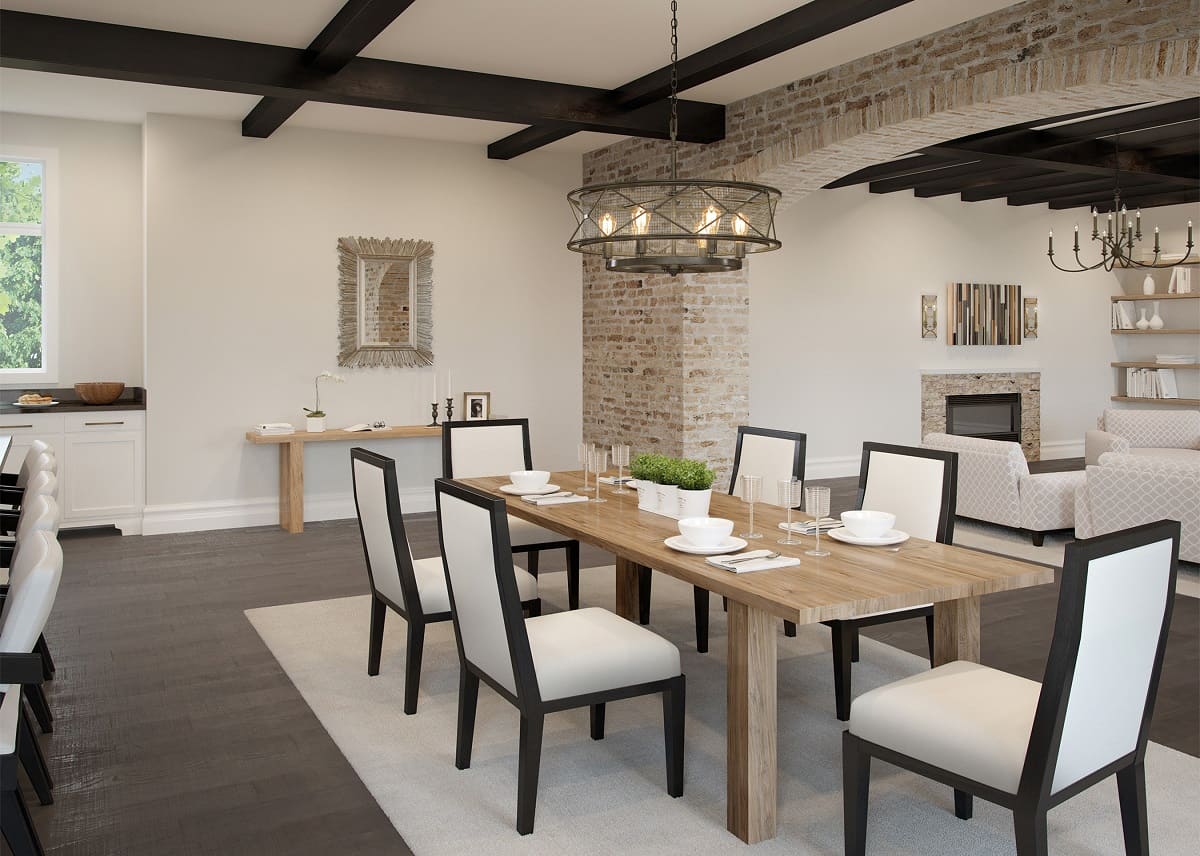
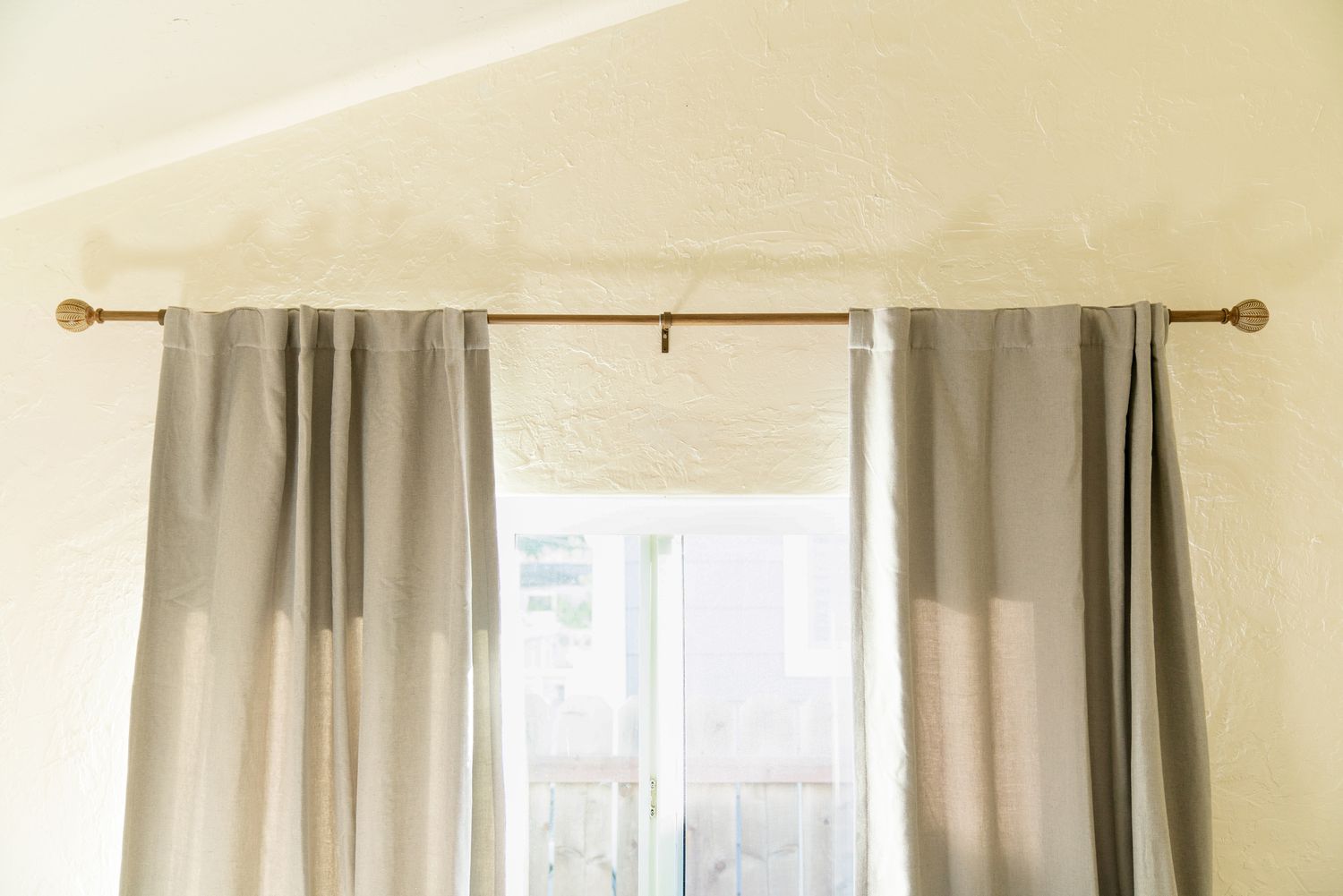
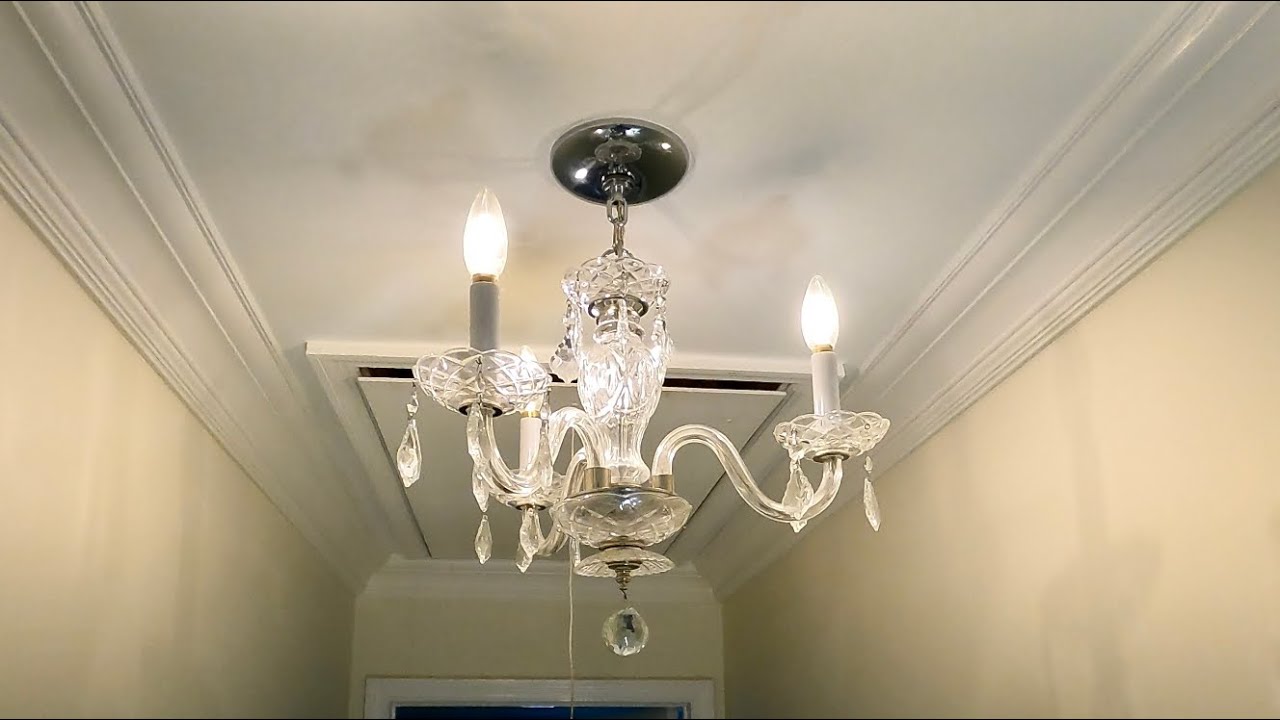


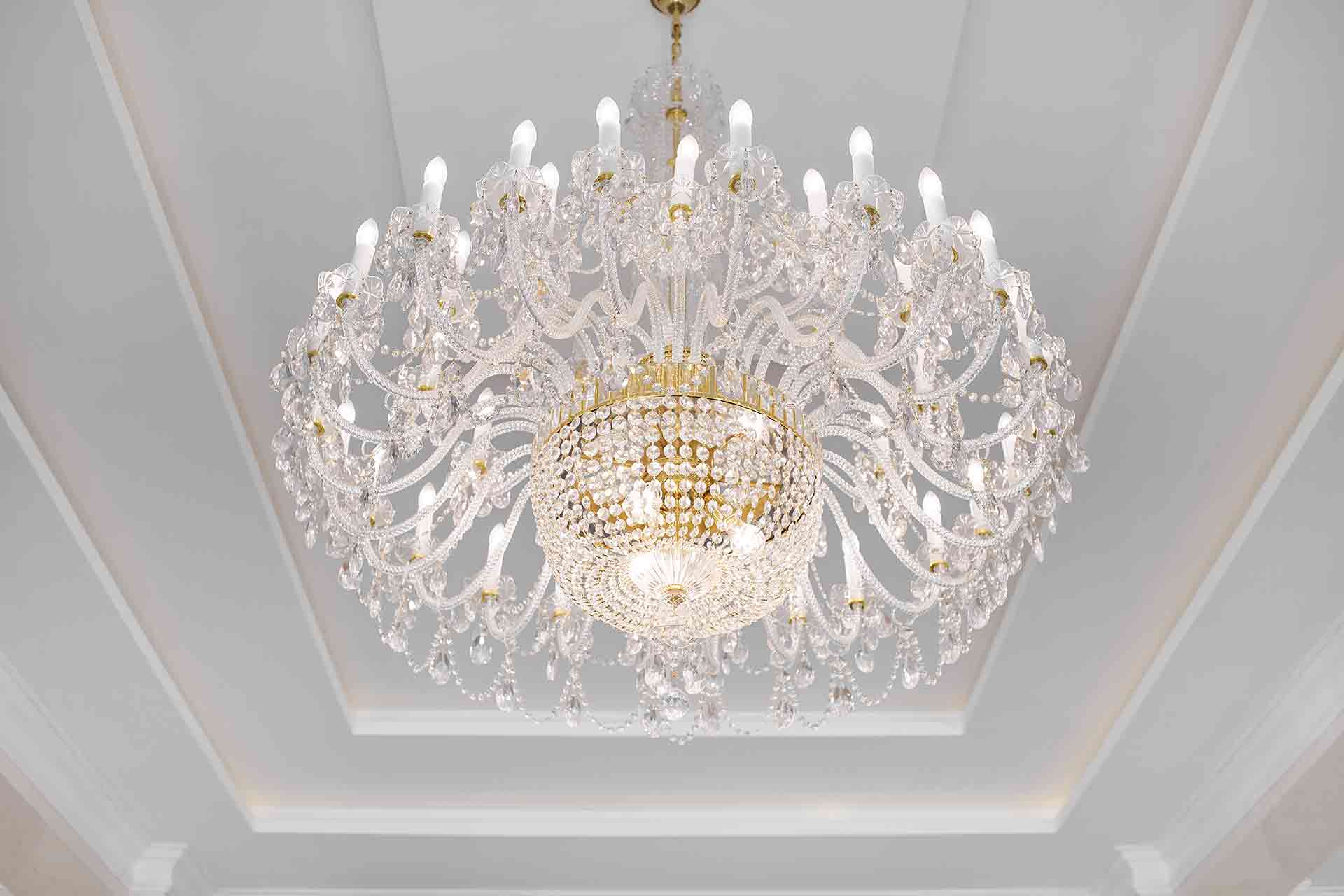

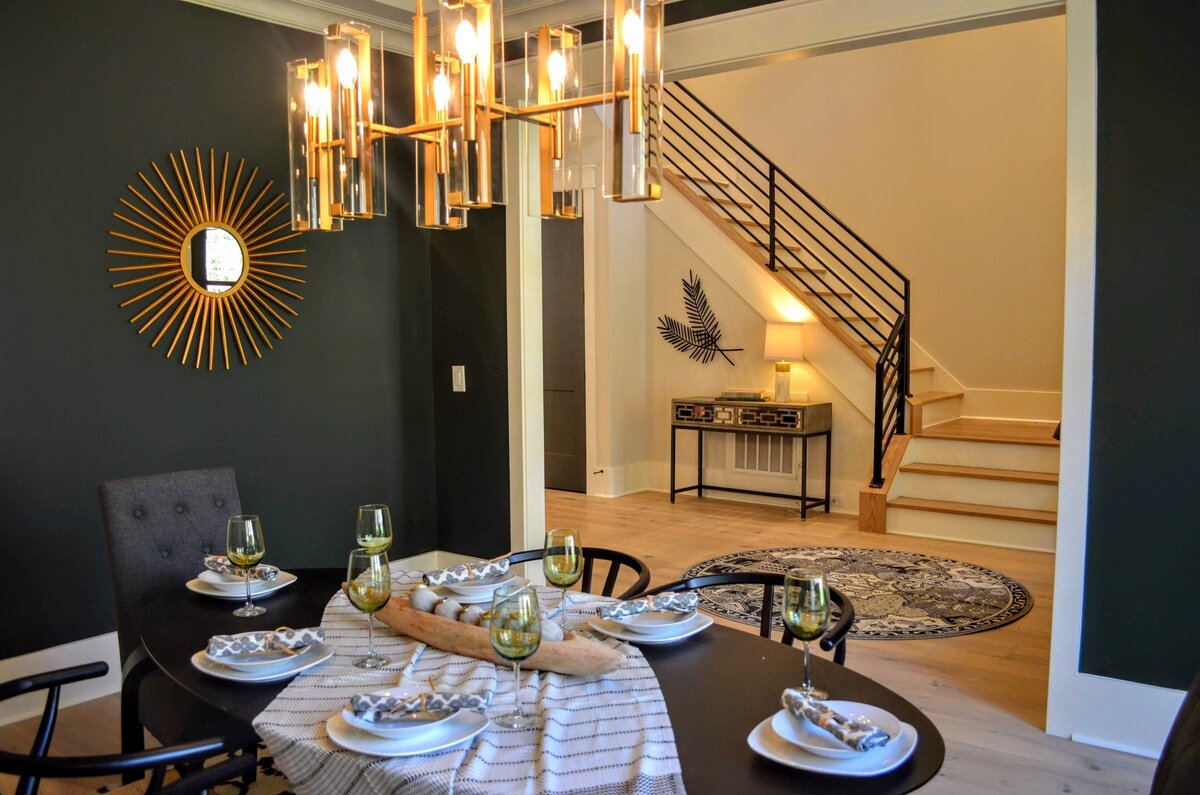

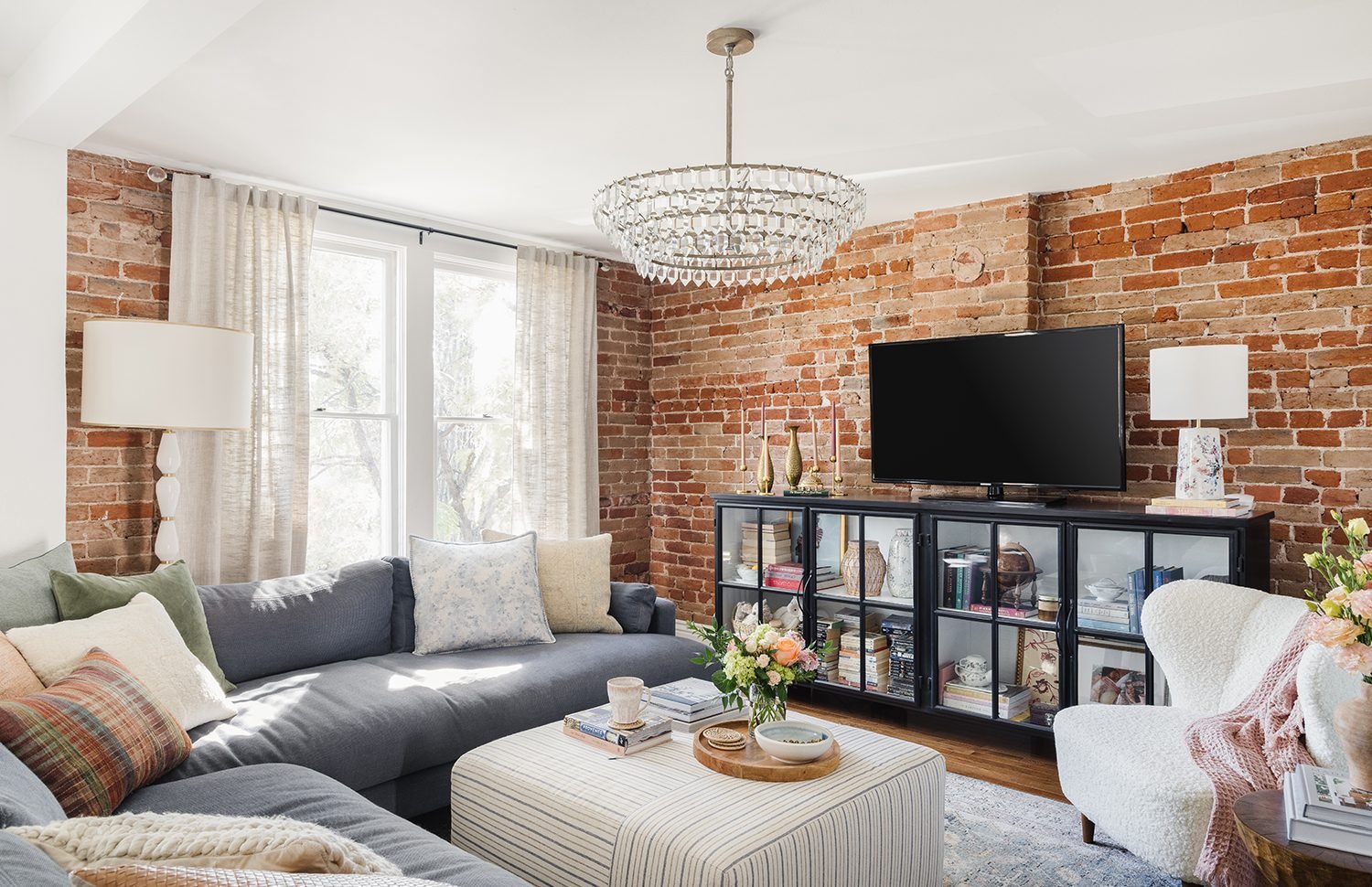
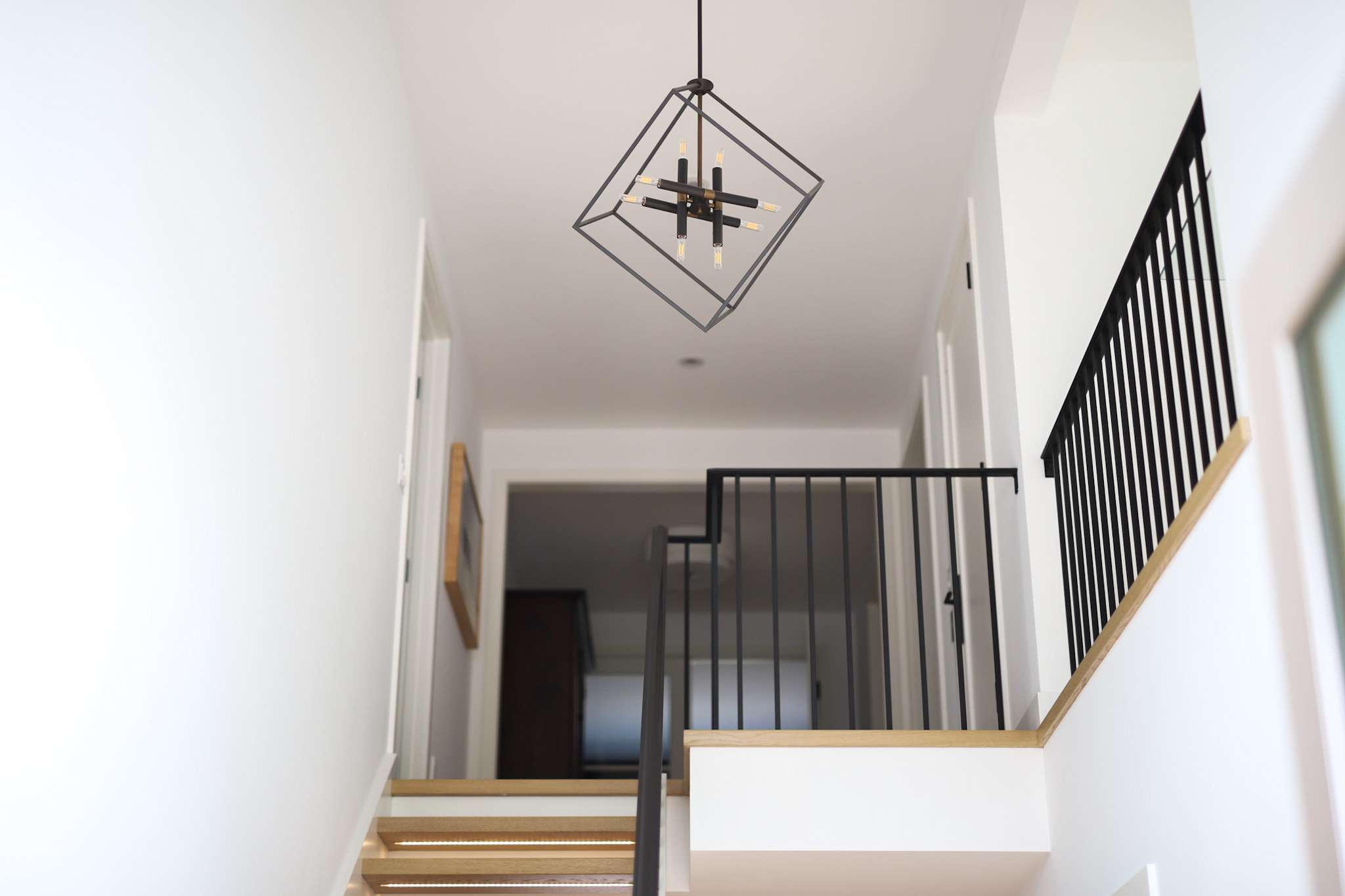

0 thoughts on “How Low Should You Hang A Chandelier”